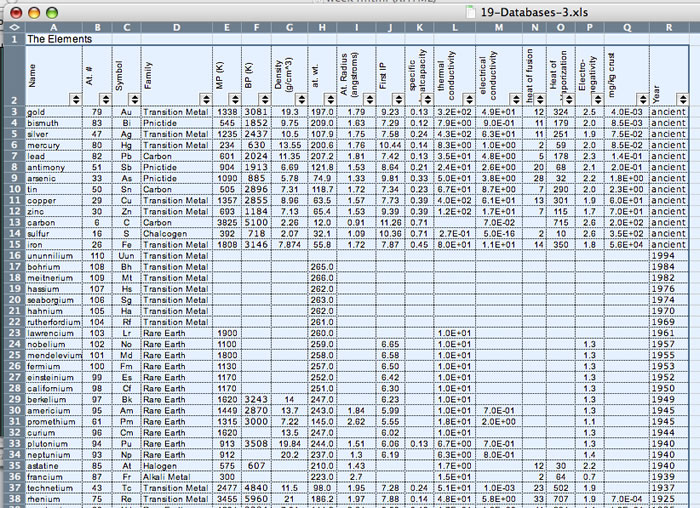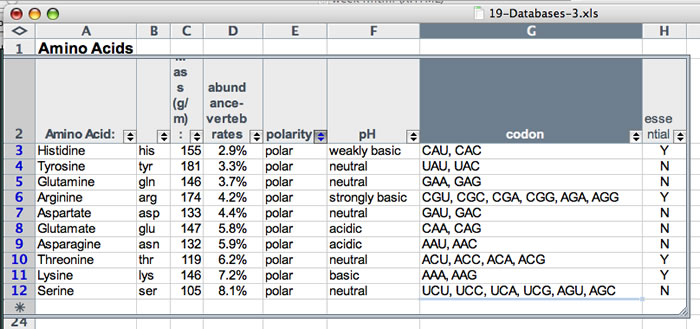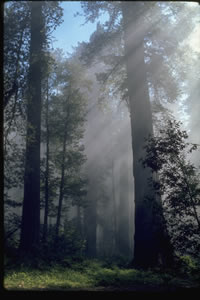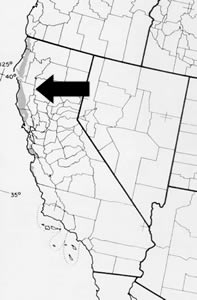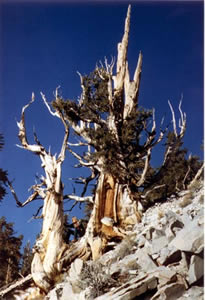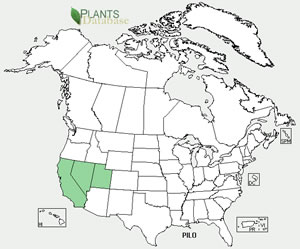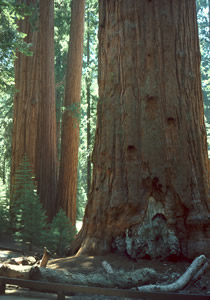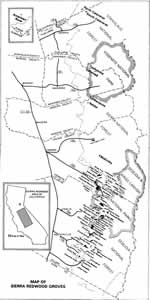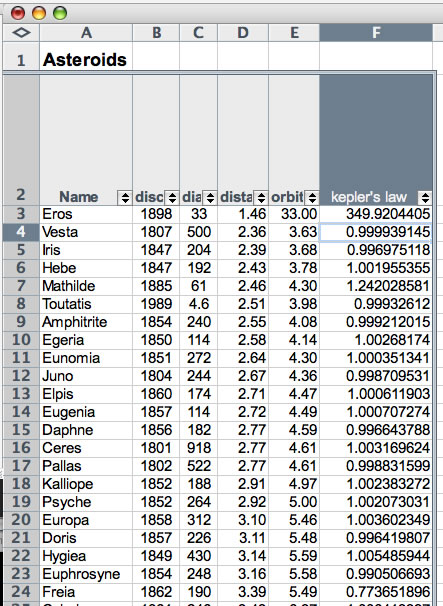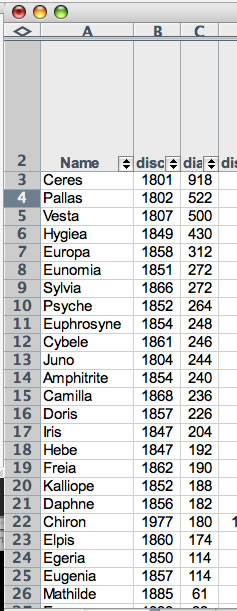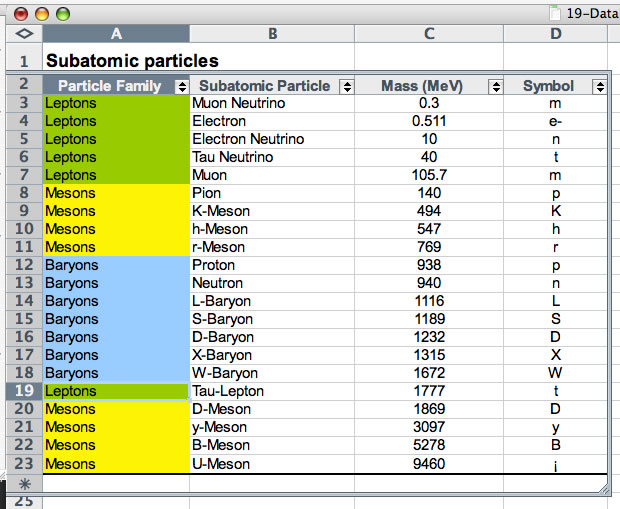Databases in Math and Science
Complete at least one activity in each section, and at least 75% of all individual activities.
(1) Databases in Chemistry
- 19.1.1 Choosing the right material
electronic circuits
aircraft design
electric switches
- 19.1.2 Arranging elements by physical properties (arrange bottled elements)
abundance
element symbols
ionization potential
- 19.1.3 Discovering family similarities (do paint chip activity)
(2) Databases in Biology
- 19.2.1 Species Diversity
- 19.2.2 Properties of Amino Acids
CCU
UAU
UCG
UUG
rarest polar amino acid in verterbrates
- 19.2.3 Human Genome
- 19.2.4 Protein Structure
- 19.2.5 Classification / Taxonomy
Sequoia Sempervirens - found in CA and OR Pinus longaeva - found in CA, NV and UT Sequoiadendron giganteum - found in CA
(3) Databases in Health
- 19.3.1 Selecting foods to reduce the risk of osteoporosis
- 19.3.2 Selecting foods to reduce the risk of cardiovascular disease
- 19.3.3 Selecting foods to treat vitamin deficiencies
- 19.3.4 Dieting and weight loss
- 19.3.5 Analyze your diet
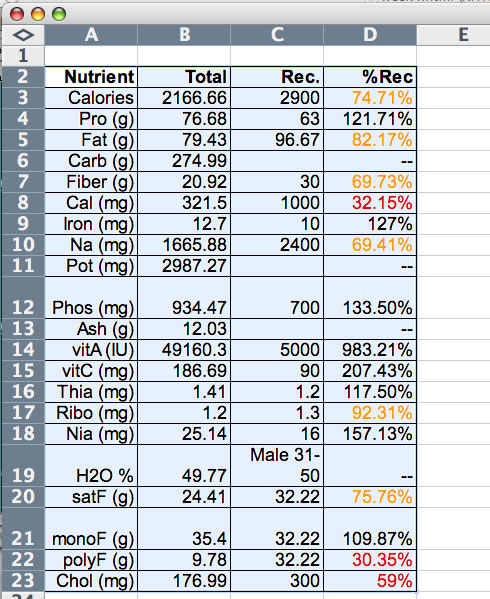
My eating habits for this day were extremely healthy as shown by the spreadsheet. I wish I ate that well all the time.
(4) Databases in Earth and Space Sciences
- 19.4.1 Comparing and contrasting the properties of planets
characteristics that differentiate inner and outer planets
- composition
- escape velocity < 12 km/s
- density > 3,000 kg/m^3
- diameter < 13,000 km
- orbital speed > 15 km/s
- year < 2 earth years
- distance from sun < 300 million km
- 19.4.2 Analyzing asteroids
The period of an asteriod is related to its distance from the sun as given by: T^2 = k*a^3
It is easier to see larger asteroids, hence they were discovered earlier
- 19.4.3 Comparing and contrasting natural disasters
(5) Databases in Physics
- 19.5.1 Classification of subatomic particles
The original classification for subatomic particles does not seem applicable since some mesons are lighter than baryons and some are heavier
- 19.5.2 Discovering the ineraction of discoveries and inventions




